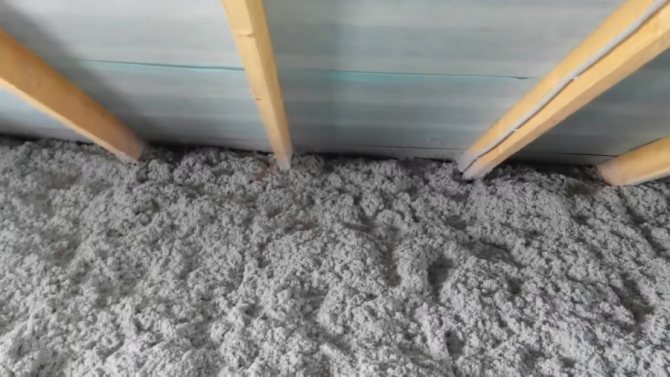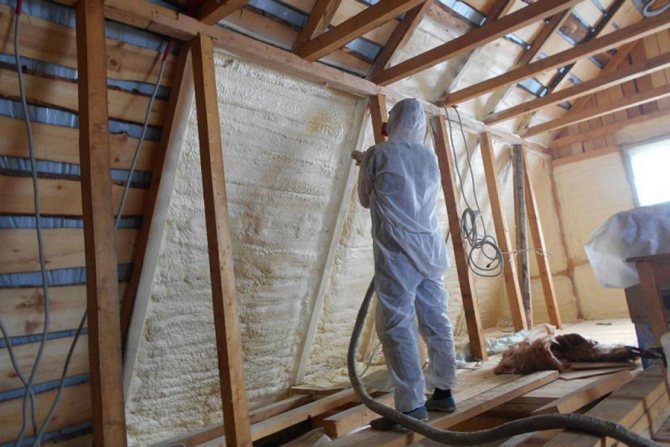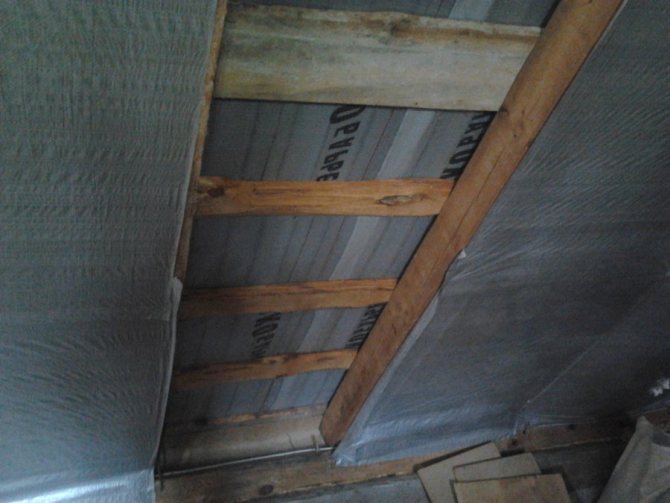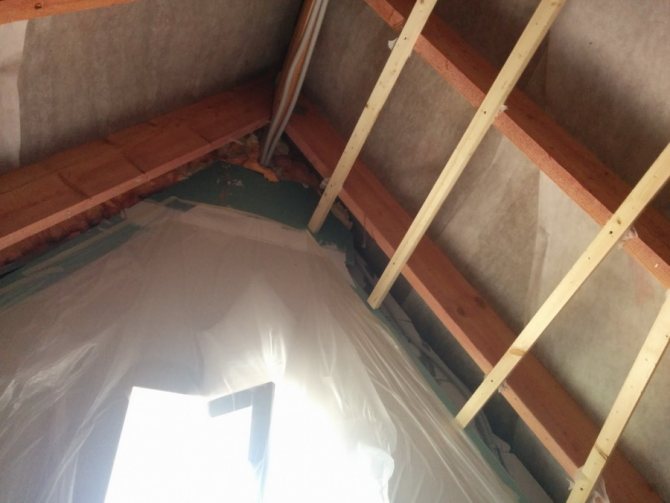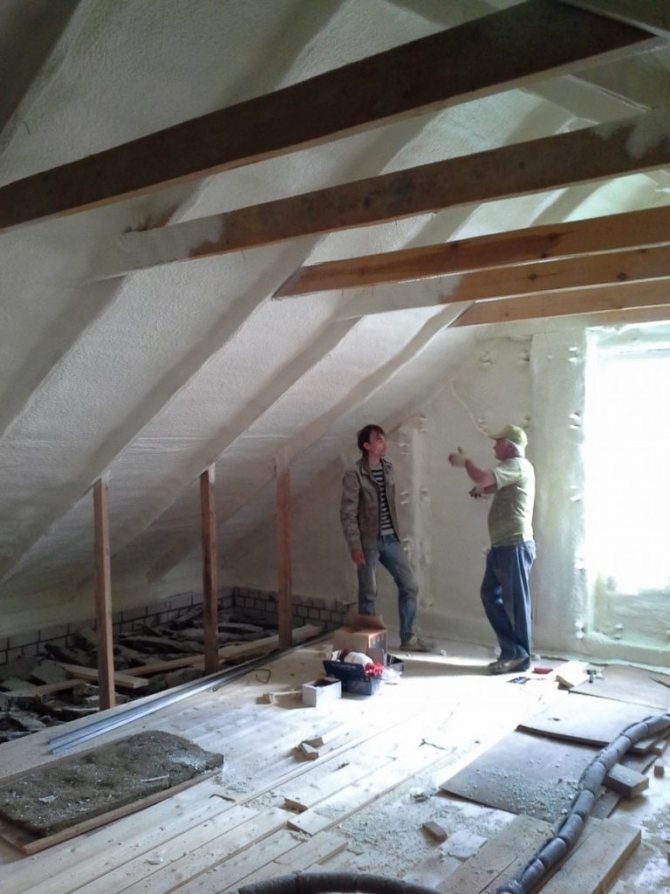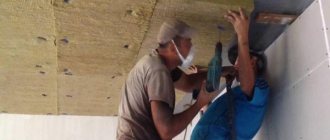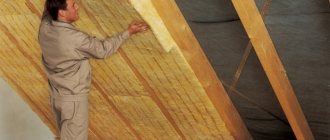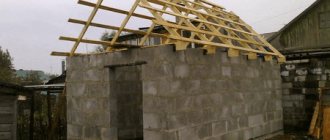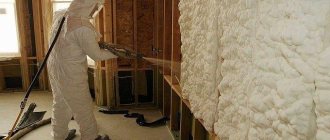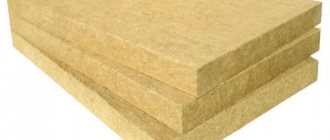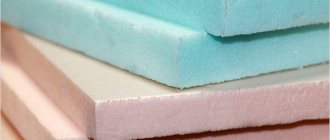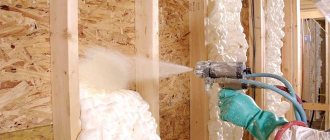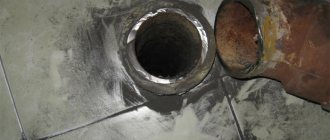Selection of material
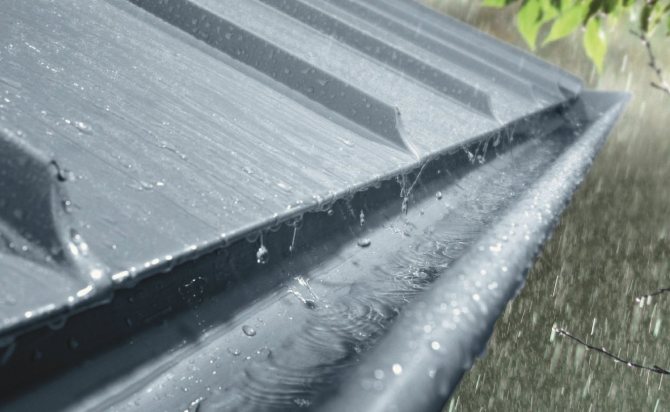
When purchasing products, first of all listen to the manufacturer.
Very often, when buying a particular roof covering, an instruction is attached to it, which should indicate what materials it is in good contact with. For example, metal tiles or corrugated board, however, like all other metal coatings, become a place for moisture accumulation and you can remove it in two ways.
The first method is to prevent moisture from entering the roofing cake. For this, waterproofing and vapor barrier products are used. As for the second, everything here will depend on the created system of natural ventilation. Understanding what suits you best will help the answer to the question: "what will be your roofing cake?" By design features, the roof can be:
- Cold.
Here, the attic space can only be used as a storage room. By the way, in most cases, the villagers do this. - Warm.
If you decide that the attic space will be insulated, then you can think about a residential attic. The structure of the roofing cake will be much more complicated, more materials will be spent on its arrangement, but all this will be leveled out by additional residential squares.
Once you have decided on the purpose of your attic, you can start thinking about waterproofing products or how to get quality ventilation.
How to install waterproofing under a cold roof
Typically, cold roofs are created from a standard set of materials and structures, namely:
- Lathing and counter-lathing. This system can be created both from lumber and from metal, the main thing is that the ventilation ducts do their job well. In the case of using wood, the counter-grill will create an air gap that will allow gusts of wind to blow excess moisture out of the roofing cake.
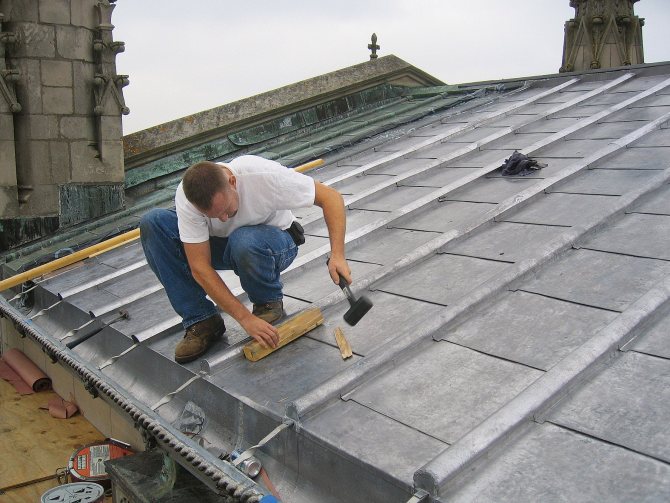

- Waterproofing product. For cold systems, it is best to use special membrane films that protect wood and metal products from all types of precipitation. They can be attached on top of the crate itself, before installing the roofing material or under the crate, so that moisture does not come from inside the living quarters. However, you can combine the two methods and get a closed roofing cake, reliably protected from moisture on both sides.
- Finish coating. In this case, a metal tile or profiled sheet will be used.
IMPORTANT: This kit is often used on outbuildings or on simple roofing systems in private houses. This is a great option if you want to save a ton of money and time.
Materials for insulating the roof of the house from the inside
Insulation of the roof of the house from the inside, so that there is no condensation, is carried out using suitable materials for thermal insulation of premises. The selected materials must ensure vapor permeability of building structures and reliable waterproofing from the outside. Moisture should not get into the thermal insulation layer, while water vapor should be removed from the attic or attic floor of the building.
Fibrous materials - basalt or mineral wool - are best suited for roof insulation. Unlike polystyrene or polyurethane foam, they allow water vapor to pass through and reduce humidity in a warm room. But fibrous insulation loses its properties when moistened and deforms over time. When insulating a roof, it is necessary to observe the sequence of layers of the insulating "pie".
How to install waterproofing under a warm roof
Now, let's take a look at the layers of the insulated roofing cake.
- The lathing and counter-lathing are made of wood.
- Vapor barrier material. If in a cold attic it was not important which insulation product to use, then here its choice should be approached more rationally. When buying a material, first of all, pay attention to its ability to withstand temperature extremes. As an example, we can cite a situation when it will be quite cold outside, but it is hot in the attic and a large temperature difference can be a serious test for a waterproofing product. Next, study its vapor permeability, if it is absent, then it will protect the thermal insulation boards from moisture well.
- After laying the insulation, an additional lathing is created. It is created for an air gap, so small blocks can be used to create it.
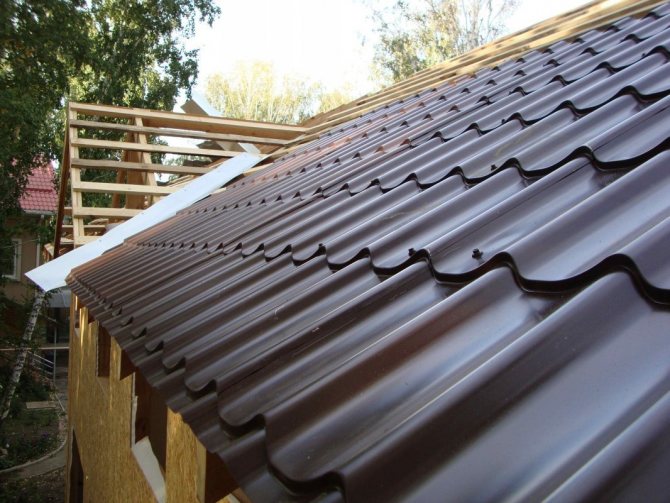

- Next comes the thermal insulation material. Since metal roofs collect moisture in the attic, it is best to use hydrophobic materials. They are not afraid of water, therefore, their service life in these conditions will be as long as possible. Foam glass and polystyrene can be considered striking representatives of this category. It is worth noting that if you cannot afford such materials, then you can use proven mineral slabs.
- A waterproofing material is laid on top of the thermal insulation. It will act as a protection against precipitation and condensation.
It is worth noting that it is possible to insulate a metal roof from the inside.
But this way you will reduce the volume of the attic space and complicate the work, since the installation of thermal insulation material will become inconvenient.
Roof insulation technology with mineral wool
In order to increase the heat-insulating ability of the roof from the inside with the help of mineral wool, it is necessary to select the technology of economically justified insulation by preparing the necessary materials:
- wind protection;
- waterproofing;
- insulation;
- vapor barrier.
To ensure the comfort of the building, as well as to increase the service life, the layers of the roofing cake are arranged in a certain order in the direction from bottom to top:
- ceiling sheathing from the inside of the room;
- lower lathing;
- steam isolation;
- rafter legs;
- insulation between the rafters;
- waterproofing;
- lathing;
- roof covering.
Roof insulation from the inside with mineral wool - the choice of mineral wool for roof insulation
Following towards technologies that provide roof insulation from the inside with their own hands with mineral wool, manufacturers are constantly updating insulation models, endowing them with unique properties and quality characteristics
Prices for mineral wool
- Foil plates - they look decent, but create additional problems, disrupting the natural magnetic background.
- Slabs covered with a film, insulation from steam - the presence of a film does not negate the insulation of the entire surface of the roof from water vapor by a single membrane.
- Slabs with layers of different densities - the upper layer of increased density, a ventilated facade that is not blown through for normal conditions in the system, but the main one is lighter and more heat-insulating.
- Mineral wool, covered with a superdiffusion film - provides vapor-permeable protection of mineral wool against blowing, however, in comparison with others, it is more expensive.
Mineral wool slabs are more durable. When insulating the roof with your own hands, fixing them will not be difficult and will not require special devices.
Insulation of a sloped roof with mineral wool.
During the insulation of the pitched roof, the mineral wool is placed between the rafters. In this case, the size of the strata becomes important. The master chooses the width of the blocks of mineral wool by a couple of centimeters more than the distance between the beams. The sloped roof is insulated with sheets with a density of up to 160 kg / m3. without fixing.After compression, the panels do not regain their shape and do not hold on their own. To strengthen their position, you will need a crate. The attic roof is most often insulated by laying the material inside the frame, which reduces the operating time. Experts advise to insulate the pitched roof during the construction of the building, along with the thermal insulation of the walls of the house from the inside. It is only necessary to carry out work in dry weather. In the autumn, the roof cladding is mounted, and then the insulator is laid from the attic side to the prepared place. It is also possible to insulate the roof with mineral wool from the inside in old buildings.
Insulation of the roof from the inside with mineral wool - thermal insulation of a flat roof
Rigid slabs are used to insulate a flat roof from the inside. Stone wool works best, but high-density glass wool can also do the job. Do not use soft mineral wool samples. When walking on the roof, under the weight of the snow cover, they sag and this can lead to a violation of the integrity of the vapor barrier membrane. To preserve the waterproofing, the sheets are covered with a cement-sand screed and increase the load on the floor, as a result of which the use of the screed depends on the degree of strength of the structure.
Roofing material as waterproofing
For quite a long time, roofing material has been used as a waterproofing product. During this time, he underwent significant changes that only improved his performance. If the old bituminous material could lie on the roof for only 2-3 years, then the modern roofing felt will lie there for about 15 years and practically nothing will happen to it.
Despite the fact that this material is used throughout the construction field, it is still not worth using it as a waterproofing product. The reason for this lies in the properties of the bitumen itself. This material does not tolerate severe frost, and it can only be arranged in cold attics. At low temperatures, the material becomes brittle and crumbles at the slightest deformation. Therefore, a bituminous roll product is used as an independent waterproofing layer only in extreme cases.
The bituminous canvas must be placed under the crate without fail. After the laying work is completed, a metal covering is arranged on top of the wooden structure. This is the only way to obtain a relatively high-quality roofing cake that can be left unrepaired for 10 years.
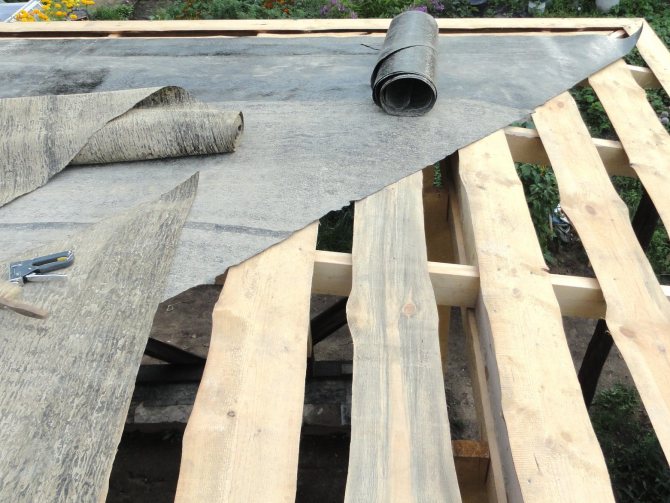

Alternatively, it is best to use a membrane waterproofing, or in extreme cases, a three-layer film. This material consists of a polypropylene material, in which two layers perform protective functions, and the middle one plays the role of reinforcement. Thanks to the micropores of the membrane, moisture does not linger in the attic and is released naturally.
Membrane products can be used in both warm and cold roofing systems. Determination of the direction of micropores can be attributed to the difficulties in laying. If you lay it on the wrong side, then the moist air will flow from the outside, and not vice versa.
Of course, so that developers do not make mistakes, manufacturers indicate the right side in the instructions. When laying material from a roll, the top layer will be insulating, i.e. by rolling out the material, you are already laying it on the right side. If you liked the film waterproofing, then carefully read the next paragraph.
Varieties of film waterproofing
For waterproofing roofs on outbuildings or houses with a cold type of roof, the cheapest membrane products are suitable, as for insulated ones, it is most advisable here to use the highest quality diffusion material.Of course, the price tag for such a membrane will be much higher, but this will provide you with a long operating period for the entire roofing system.
The most expensive material in the field of waterproofing is considered to be anti-condensation film. The density of this product is significantly higher than that of its counterparts. It has a rough surface, which is the reason why moisture does not accumulate on this material. Such a film is most often found on complex roofing systems, where the durability of the roof is an important parameter, even if the coating is metallic.
Anti-condensation films have a good degree of fire resistance,
and as tests have shown, it does not burn even on an open fire. Thanks to this, the material can be considered safe and used in public construction.


Materials (edit)
Thermal insulation of slopes is performed if the roof is of the "warm" type. Insulation is placed between the rafters of the frame, this task is performed outside during roofing work. This is due to the fact that it is inconvenient and long to fix the plates by holding them above the head. For internal insulation of roof slopes with their own hands, the following types of mineral wool are used:
- Glass wool. Glass wool is a roof insulation made from glass fibers, the thickness of which is not more than 15 microns. It is available in the form of rolls, slabs and mats and has high thermal insulation characteristics, resistance to fire, mold and mildew. The plates are quite elastic and durable, which greatly simplifies do-it-yourself installation. The price of 1 square meter of glass wool is 140-160 rubles, which is significantly lower than the average price for analogues with the same characteristics. However, this material has a significant drawback - when in contact with the skin, mucous membranes and respiratory tract, it causes severe irritation, so you need to work in a respirator, goggles, gloves and overalls that cover the entire body of the master.


Roll-shaped glass wool

- Stone wool. Stone or basalt wool is a fibrous insulation based on a natural mineral, gabbro-basalt. Carbonate rocks, bentonite clay and other composite substances are introduced into the composition of this material. Stone wool perfectly retains heat, does not burn, and is also not damaged by mold and fungi. Compared to glass wool, basalt fiber slabs have a less elastic and rigid structure. The price of this material is 1.5-2 times higher than glass wool, however, it is even more popular. This is due to the fact that the use of basalt fiber is completely safe and does not harm health when installing the roof with your own hands and using it.


Stone wool roll
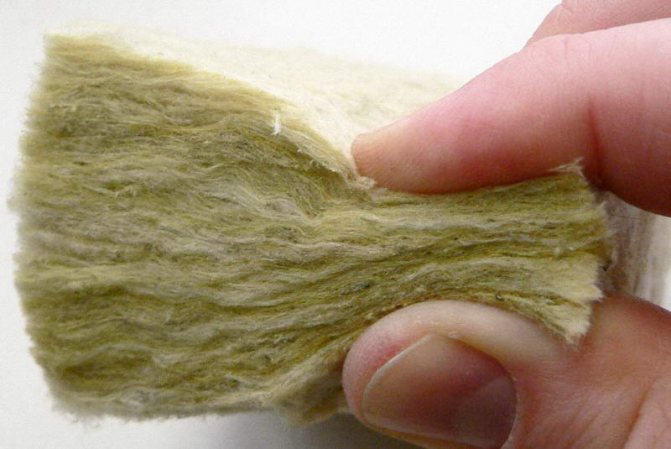


Comparison of the properties of glass wool and stone wool
Note! For internal insulation of the roof, you cannot use slag wool. This cheap type of mineral-based insulation is made from waste from the metallurgical industry. But blast-furnace slags, from which slag wool is made, during installation emit a lot of the smallest tiny particles that are dangerous to human health.
Insulation of a metal roof
Before installing thermal insulation products, it is worthwhile to understand why it is generally installed and how to make this layer effective. First of all, make sure that the plates do not come into contact with the waterproofing layer, this can lead to a complete loss of all positive qualities.
After the rafter frame is assembled, you can proceed with the waterproofing device. As a rule, it is attached to the base with a stapler and pressed against the crate. It is worth noting that if you use metal products as a coating, then the minimum distance between the insulation and the roof should be 5 millimeters.This will allow the air masses to dry the surface from excessive condensation.
In no case should waterproofing materials be stretched, otherwise it will tear very quickly during operation. When installing roll insulation, loosen the tension and let it sag by a maximum of 2 millimeters, this is quite enough.
An insulated roofing system must necessarily have high-quality natural ventilation. The clean air inlet is usually located under the eaves. The height of such a gap is made different and depends on the volume of the attic space, but the minimum value is 5 centimeters.
Inter-rafter insulation
For the device of inter-rafter insulation, it is necessary to perform the following operations:
- Cut the mineral wool into strips 2-3 cm wide more than the inter-rafter distance. Mineral wool is an elastic material. Due to the fact that the size of the piece will exceed the width between the rafters by 2-3 cm, it will stand in the space and will hold due to its own elasticity.
- Lay the required number of layers. The thickness of the insulation layer is selected depending on the region. General recommendations are as follows: in regions with stable negative temperatures in winter, insulation should be laid with a layer of at least 200 mm. In regions with a predominance of positive temperatures in winter, a layer of 100 mm is sufficient.
- Insert the cut pieces between the rafters.
- Lay a layer of vapor barrier foil.
- Install a waterproofing film along the upper edge of the rafters.
To form the required ventilation gap, the films are mounted with sagging. The recommended amount of sag is 20 mm.
The Ondulin company produces a whole line of insulating films under the Ondutis trademark. They perfectly isolate the insulation and the interior of the building from the negative effects of water vapor and moisture and protect the roof structure from destruction. By using them, you guarantee yourself that roof repairs will not come unexpectedly. Moreover, it will become a very distant prospect.
Insulating films must be laid so that they do not reach the ridge of 50-100mm horizontally. This will create effective ventilation in the under-roof space. But neglect of this rule will lead to the fact that water vapor will not be removed from the under-roof space completely and in a timely manner, as a result of which it will condense on the lower surface of the vapor barrier films, turn into drizzle in the cold season and reduce the vapor permeability of the film.
This method of installing thermal insulation is, of course, very simple and accessible to any of those who are building a house with their own hands. However, it has one, but a very significant drawback - even small gaps between the rafters and insulation sheets will lead to the formation of "cold bridges".
Simply put, the insulation will not fully prevent heat loss; fungus can settle on the wooden parts of the roof structure. Yes, and roofing materials can suffer - for example, condensation forms under the metal tile and it will begin to rust. How can one fail to note the fact that the roofing materials of the Ondulin company do not condense moisture.
